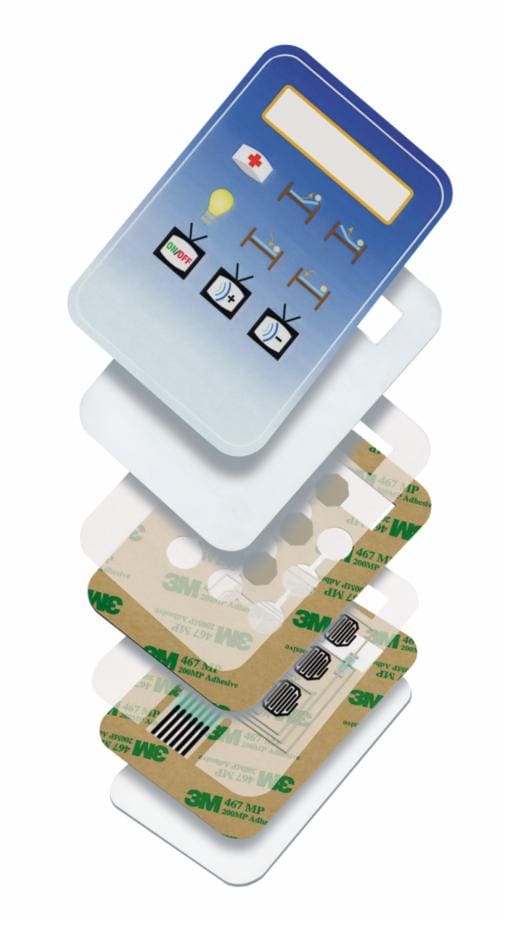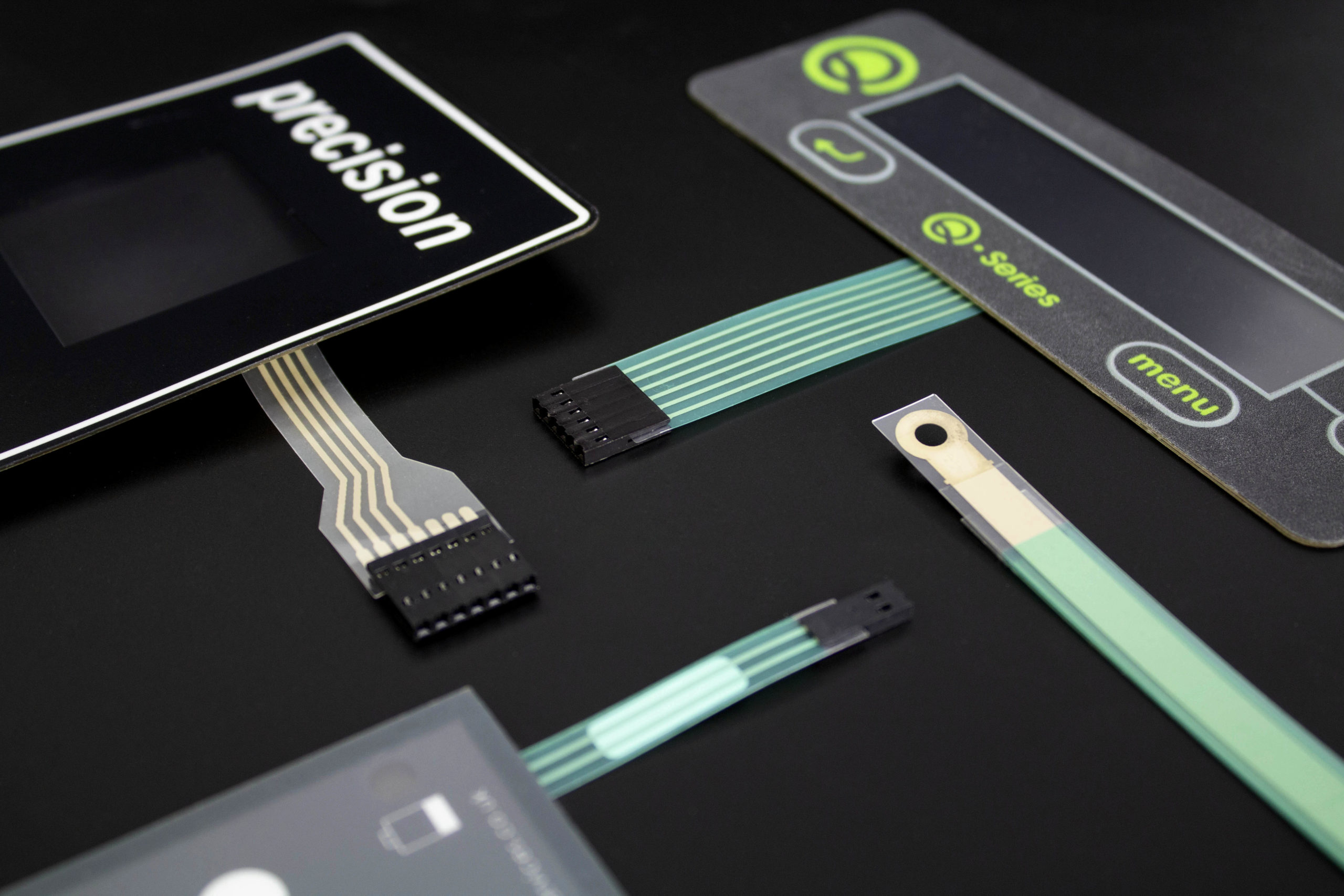Recognizing the Significance of Membrane Switch in Modern Electronics
Membrane buttons are important parts in modern-day electronic devices. They supply a mix of functionality and layout that improves customer interaction. Their long lasting and light-weight nature makes them ideal for various applications. As markets advance, the need for customization and advanced attributes grows. Comprehending how membrane changes add to advancement discloses their value in shaping the future of electronics. What exists ahead for this modern technology?
The Basics of Membrane Switch Over Modern Technology
Commonly ignored, membrane layer button technology plays a crucial role in the modern electronics landscape. These devices, composed of multiple layers, offer as interface for various digital items, varying from home home appliances to clinical devices. A common membrane layer switch includes a visuals overlay, a spacer layer, and a circuit layer, which are thoroughly assembled to produce a practical interface.When stress is applied to the overlay, the circuit layer is finished, permitting signals to be sent to the device. This innovation is understood for its versatility, making it possible for personalization in layout, shape, and performance to meet specific user demands. In addition, membrane buttons are thin and lightweight, making them appropriate for applications where area is a costs. Their sturdiness and resistance to ecological aspects additionally enhance their appeal, ensuring they can hold up against harsh conditions while maintaining capability. On the whole, membrane layer switch technology is essential to producing user-friendly and effective digital gadgets

Key Benefits of Membrane Layer Changes
Membrane layer switches deal a number of vital advantages that make them a preferred selection in various digital applications. Their style enables a small form variable, enabling makers to develop lightweight and sleek devices. In addition, membrane switches are immune to dust, wetness, and chemicals, which boosts their toughness and durability in demanding environments. The tactile feedback given by these switches can improve individual experience, making them intuitive and simple to operate.Furthermore, membrane layer switches can be tailored with varied graphics and shades, enabling unique branding opportunities. The manufacturing process is usually cost-effective, specifically for high-volume production, as it reduces setting up time and simplifies layout. Ultimately, membrane layer switches over need very little maintenance, adding to lower general operational expenses. These benefits highlight their expanding popularity in modern electronics, where dependability and straightforward user interfaces are essential.

Applications Across Various Industries
The flexibility of membrane layer changes enables their prevalent fostering throughout numerous industries. In the clinical field, they are typically used in analysis equipment and patient surveillance systems, supplying a sturdy user interface resistant to impurities. The vehicle sector uses membrane layer switches for dashboard controls, boosting individual experience with smooth styles that hold up against rough problems. In customer electronic devices, they function as control panels for devices such as microwaves and coffee machine, offering a straightforward interface that is simple to tidy. The aerospace sector uses membrane layer switches in cabin controls, where integrity and area effectiveness are extremely important. Additionally, the industrial market leverages these switches in equipment and control systems to ensure durable procedure popular settings. This broad series of applications highlights the versatility of membrane layer switches, making them important elements in enhancing capability and individual communication throughout diverse technical landscapes.
Modification and Design Versatility

Future Trends in Membrane Change Growth
Emerging patterns in membrane switch development show an expanding focus on boosted capability and assimilation with clever technologies. As consumer need for more advanced digital tools rises, makers are concentrating on developing membrane layer switches over that not just serve standard operational roles yet likewise include attributes like touch sensitivity, backlighting, and haptic feedback.Furthermore, developments in materials are anticipated to enhance resilience and ecological resistance, making membrane switches over ideal for varied applications in sectors such as health care, auto, and customer electronic devices. The combination of capacitive touch modern technology is most likely to end up being much more widespread, permitting sleeker styles and improved customer interfaces. membrane switch.Additionally, the surge of the Web his response of Points (IoT) is triggering the advancement of membrane changes that can interact wirelessly with various other devices, boosting interconnectivity. In general, the future of membrane button innovation appears encouraging, driven by technology and the pursuit of straightforward options
Regularly Asked Concerns
Exactly How Do Membrane Switches Contrast to Standard Mechanical Switches?
Membrane switches, being a lot more space-efficient and using a sleek layout, comparison with standard mechanical switches that supply tactile feedback. The previous frequently feature customizable graphics, while the latter usually assure toughness and integrity in different applications.
What Materials Are Frequently Used in Membrane Switch Production?
Membrane switches are commonly generated using materials such as polyester, polycarbonate, and published conductive inks. These materials provide sturdiness, responsiveness, and versatility, making them suitable for different applications in electronic gadgets and interface.
Can Membrane Switches Over Be Repaired or Reused?
Membrane switches can typically be fixed, specifically if minor problems arise, such as adhesive failure or surface area damages. Nonetheless, total reuse is generally limited due to wear and possible degradation of materials over time.
Just How Do Ecological Elements Impact Membrane Layer Switch Over Efficiency?
Environmental variables, such as humidity, direct exposure, and temperature level to chemicals, substantially influence membrane layer switch performance. Extreme conditions can bring about destruction, impacting responsiveness and longevity, eventually jeopardizing the performance of the tool in numerous applications.
What Is the Common Lifespan of a Membrane Change?
The regular lifespan of a membrane button normally varies from 1 to 5 million actuations, depending on variables such as usage regularity, environmental conditions, and the products used in production, impacting longevity and efficiency durability. A regular membrane button is composed of a visuals overlay, a spacer layer, and a circuit layer, which are thoroughly put together to create a useful interface - membrane switch.When stress is applied to the overlay, the circuit layer is finished, enabling signals to be sent to the tool. The tactile comments supplied by these switches can boost user experience, making them user-friendly and simple to operate.Furthermore, membrane switches can be tailored with diverse graphics and shades, allowing for special branding opportunities. As consumer need for more innovative digital gadgets boosts, manufacturers are focusing on producing membrane switches that not just offer standard operational duties but additionally incorporate features like touch sensitivity, backlighting, and haptic feedback.Furthermore, advancements in products are anticipated to enhance resilience and environmental resistance, making membrane switches ideal for diverse applications in industries such as health care, automotive, and customer electronics. The integration of capacitive touch modern technology is most likely to become more common, permitting for sleeker designs and improved individual interfaces.Additionally, the surge of the Net of imp source Points (IoT) is prompting the growth of membrane switches over that can interact wirelessly with other tools, boosting interconnectivity. Membrane buttons, being a lot more space-efficient and offering a smooth design, comparison with traditional mechanical buttons that provide tactile responses